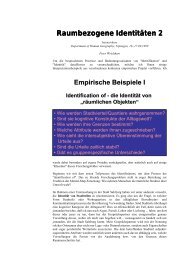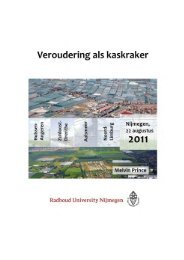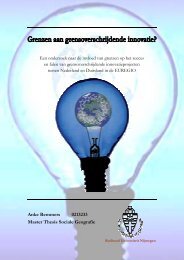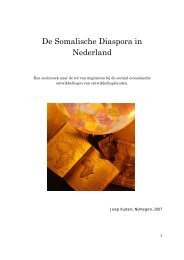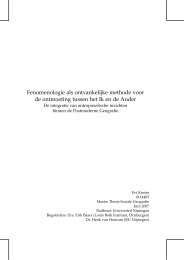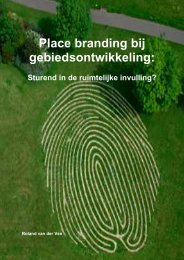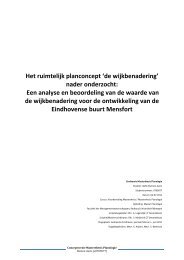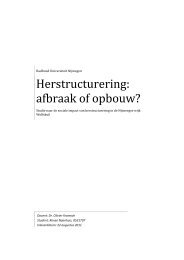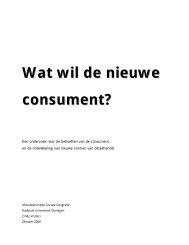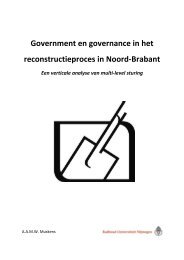Trading with the enemy in Mitrovica, Kosovo. - RUhosting
Trading with the enemy in Mitrovica, Kosovo. - RUhosting
Trading with the enemy in Mitrovica, Kosovo. - RUhosting
You also want an ePaper? Increase the reach of your titles
YUMPU automatically turns print PDFs into web optimized ePapers that Google loves.
which were <strong>in</strong> turn disbanded <strong>in</strong> favour of larger municipalities <strong>in</strong> 1959-1960. The municipality of Zvecan<br />
was created and detached from <strong>the</strong> municipality of <strong>Mitrovica</strong> <strong>in</strong> 1991. The detachment of several areas of<br />
<strong>Mitrovica</strong> created Serb-dom<strong>in</strong>ated municipalities surround<strong>in</strong>g <strong>Mitrovica</strong> but made <strong>the</strong> imbalance between<br />
Albanians and Serbs <strong>in</strong> <strong>Mitrovica</strong> itself bigger. Accord<strong>in</strong>g to <strong>the</strong> 1991 census <strong>Mitrovica</strong> was 78,9 % Albanian<br />
and 10,2 % Serbian. In <strong>the</strong> late 1990's this contrast became larger <strong>with</strong> only <strong>the</strong> two square kilometres of <strong>the</strong><br />
north be<strong>in</strong>g <strong>in</strong> an ethnic-balance as around 10.000 Albanians and 10.000 Serbs were liv<strong>in</strong>g <strong>the</strong>re (ICG, 2005).<br />
Dur<strong>in</strong>g <strong>the</strong> NATO bomb<strong>in</strong>g campaign most of <strong>the</strong> Albanians liv<strong>in</strong>g <strong>in</strong> <strong>Mitrovica</strong> North were expelled by<br />
Serbian security forces. Some managed to come back after <strong>the</strong> conflict, and most of <strong>the</strong>se settled <strong>in</strong> Bosniak<br />
mahalla (of <strong>the</strong> Turkish word 'mahalle' mean<strong>in</strong>g a dist<strong>in</strong>ct area <strong>in</strong> a settlement populated by ei<strong>the</strong>r a m<strong>in</strong>ority<br />
or a large extended family). But as Serbs created a defence force to prevent Albanian entry <strong>in</strong>to <strong>the</strong> nor<strong>the</strong>rn<br />
part of <strong>the</strong> city and French condoned off <strong>the</strong> bridges most could not return. The few Serb homes left <strong>in</strong><br />
<strong>Mitrovica</strong> south were burned and looted out of revenge by Albanians as was <strong>the</strong> Roma mahalla where 6.000<br />
Roma lived. (ICG, 2005).<br />
This division hardened <strong>in</strong> <strong>the</strong> follow<strong>in</strong>g months, <strong>with</strong> movement across <strong>the</strong> bridges restricted by KFOR, and<br />
Serbs creat<strong>in</strong>g a paramilitary force - <strong>the</strong> Bridge Watchers - to defend aga<strong>in</strong>st Albanians. February 2000 saw<br />
more violence which caused 1/3 of <strong>the</strong> rema<strong>in</strong><strong>in</strong>g Albanians <strong>in</strong> north <strong>Mitrovica</strong> to flee. In <strong>the</strong> follow<strong>in</strong>g years<br />
more attacks and riots would take place by both communities aga<strong>in</strong>st each o<strong>the</strong>r or aga<strong>in</strong>st <strong>the</strong> <strong>in</strong>ternational<br />
presence (ICG, 2005). On <strong>the</strong> 8 th of April 2002, UNMIK police officers were attacked <strong>with</strong> grenades and<br />
snipers <strong>in</strong> north <strong>Mitrovica</strong>. By <strong>the</strong>n people were already less impressed by such an event, as a spokesperson<br />
called it “merely <strong>the</strong> latest episode of violence that has gripped <strong>the</strong> city s<strong>in</strong>ce <strong>the</strong> UN assumed responsibility<br />
for <strong>Kosovo</strong> <strong>in</strong> June 1999” (ICG, 2002). The many cases of violence between Albanians and Serbs and<br />
violence aga<strong>in</strong>st <strong>the</strong> IC by both groups not only have a negative impact on life <strong>in</strong> <strong>Mitrovica</strong> but on entire<br />
<strong>Kosovo</strong>. “Events <strong>in</strong> <strong>the</strong> city are radicalis<strong>in</strong>g both <strong>the</strong> Albanian and Serbian communities throughout <strong>the</strong><br />
prov<strong>in</strong>ce” (ICG, 2002). Violence <strong>in</strong> <strong>Mitrovica</strong> has sometimes led to “revenge” violence <strong>in</strong> o<strong>the</strong>r areas of<br />
<strong>Kosovo</strong> and it keeps <strong>the</strong> news filled <strong>with</strong> stories about <strong>the</strong> dangerous “o<strong>the</strong>r”. The situation <strong>in</strong> <strong>the</strong> north –<br />
where Serbia still has an <strong>in</strong>fluence over <strong>Kosovo</strong>'s territory – is a cause for Albanian frustration and fear that<br />
<strong>Kosovo</strong> might be divided. It has been threatened by Albanian politicians that <strong>the</strong>y will take this matter <strong>in</strong><br />
<strong>the</strong>ir own hands (ICG 3 June 2002), and I've heard <strong>the</strong>se threats be<strong>in</strong>g echoed by local Albanians <strong>in</strong> 2008 on<br />
occasion (field notes). Hopefully this description makes it clear that <strong>Mitrovica</strong> is not only a divided city but<br />
also a divid<strong>in</strong>g city: it forms <strong>the</strong> spill <strong>in</strong> <strong>the</strong> endur<strong>in</strong>g Albanian-Serb tensions <strong>in</strong> <strong>Kosovo</strong>.<br />
4.3.2. Population<br />
The <strong>in</strong>ter-ethnic tensions and conflict had and still have a large impact on <strong>the</strong> population demographic of<br />
<strong>Mitrovica</strong>. <strong>Mitrovica</strong> is currently home to approximately 130.000 people (ECIKS, 2009), this is an <strong>in</strong>crease<br />
of 30% s<strong>in</strong>ce 2002 when <strong>the</strong> population of <strong>the</strong> municipality of <strong>Mitrovica</strong> was 100.000 (ICG, 2002). These<br />
people live <strong>in</strong> an total area of 350 km2, divided over a total of 47 settlements <strong>in</strong> <strong>the</strong> municipality of<br />
44



